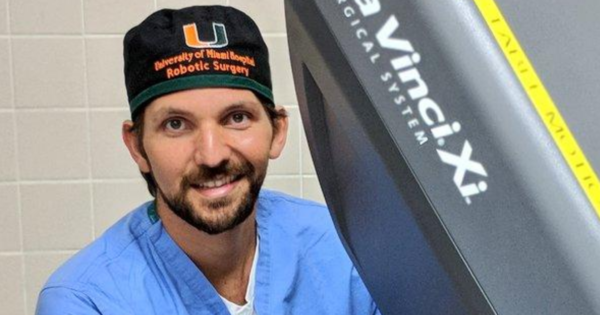According to the American Cancer Society, prostate cancer is the most common cancer among men, after skin cancer, and an estimated 191,00 new cases will have been diagnosed by the end of 2020. When men are diagnosed with prostate cancer they have to make sense of treatment options presented to them. It is important that they fully understand the risks and side effects that come with each treatment so they can make an educated choice.
Author: Paulo Martins
From Entire Prostate Removal to Focal Therapy: What to Know and How to Choose the Right Treatment for Prostate Cancer
Historically, trying to treat only part of the prostate, or subtotal treatment, had not been possible due to the deep anatomical location of the organ. Therefore, total destruction or removal of the prostate has been the “medical law of the land” for many years.
However, with the advent of active surveillance and the realization that if technology made it possible we would treat only the diseased portion of the prostate. Therefore, subtotal treatment became worthy of consideration. At first, this concept was not looked upon favorably, but is now embraced by a substantial portion of the urologic community.
One of the leading technologies for subtotal treatment is high intensity focused ultrasonography (HIFU). HIFU, which ablates the prostate by heating and destroying the diseased tissue, was approved by the US Food and Drug Administration for prostate tissue ablation in 2015. HIFU was initially used for whole gland ablation, and has been proven effective for over two decades in Europe, and other regions around the world.
Today, with subtotal treatment of the prostate, the urologist can use HIFU to perform a hemi-ablation (treating half the prostate), or focal therapy (treating focal areas of disease), especially those identified by MRI with no other areas of disease, or multiple focal areas identified by MRI that can also be treated focally. The newest generation of HIFU, Focal One, makes possible for individualized and flexible treatment planning to avoid ablating the entire prostate.
Hemi-ablation or focal therapy offer a chance to avoid the possibility of injuring both sets of neurovascular bundles that assist in male sexual function. If we only treat one side of the prostate, the other side not being treated clearly protects the nerves on that side. So the risks of erectile dysfunction and leakage of urine goes down significantly with less than total gland ablation.
Prostate Cancer treatment: Do your homework, know your options
More than 90 percent of men diagnosed with prostate cancer have localized disease, defined as cancer that hasn’t spread outside of the prostate. For some patients, urologists may recommend active surveillance or monitoring low-grade disease with periodic prostate-specific antigen (PSA) tests. But active surveillance may be difficult for patients who have been told they have cancer and do not want to live with the risk of it growing in their bodies.
Two standard choices have dominated treatments – radical prostatectomy and/or radiotherapy. However, a newer, minimally invasive treatment called high-intensity focused ultrasound (HIFU) has emerged in the U.S. and is an appropriate, non-invasive choice for prostate cancer patients who meet certain criteria.
Prostate Cancer & COVID-19 – Information from Maimonides Prostate Center
Like most hospitals across the U.S., Maimonides Medical Center is prioritizing resources to care for COVID-19 patients. Ordinarily a 710 bed teaching hospital, Maimonides has temporarily surged to over 1,400 beds, including 400 ICU beds in response to the pandemic.
All elective surgeries and most outpatient services have been postponed to focus on care for those who have COVID-19 and reduce the risk of infection to others. The hospital’s current goal is to help as many COVID-19 patients as possible.
Delays in your treatment may cause some anxiety, but be assured that while treatment must and will happen, delaying for a short period of time will not put you at risk because of the slow growing nature of prostate cancer. In addition, with this relatively brief delay, we are able to protect you from COVID-19 infection by minimizing your contact with the healthcare system, and it will not affect your prostate cancer.
How I beat prostate cancer while preserving my quality of life
During a routine PSA test in 2017 at Rochester General Hospital, my urologist, John Valvo, M.D., was concerned about my test results. Doctors consider PSA levels of 3.9 or lower to be normal, any my PSA score was 5. After a biopsy, Dr. Valvo confirmed the prostate cancer diagnosis.
“…”
Dr. Valvo mentioned another, newer treatment called high intensity focused ultrasound (HIFU), which was going to be offered at Rochester General Hospital in the fall of 2019, and said I was a good candidate.
3 Prostate Cancer Survivors share their stories
A cross-interview of 3 prostate cancer patients who received an HIFU procedure. With Shelly Gordon
How I Beat Prostate Cancer While Maintaining My Quality of Life
Since my prostate cancer was detected early, I did a lot of investigating into my treatment options.
Finding the Right Prostate Cancer Treatment for Me
Then, one of my friends from the gym told me he’d seen an ad about a procedure called High Intensity Focused Ultrasound, or HIFU. With HIFU, the doctor directs high-frequency sound waves to heat up and burn off diseased tissue in the prostate using an ultrasound probe. I don’t know how comfortable I felt hearing him say, ‘burning off diseased tissue’, but I appreciated hearing I may have another choice.








